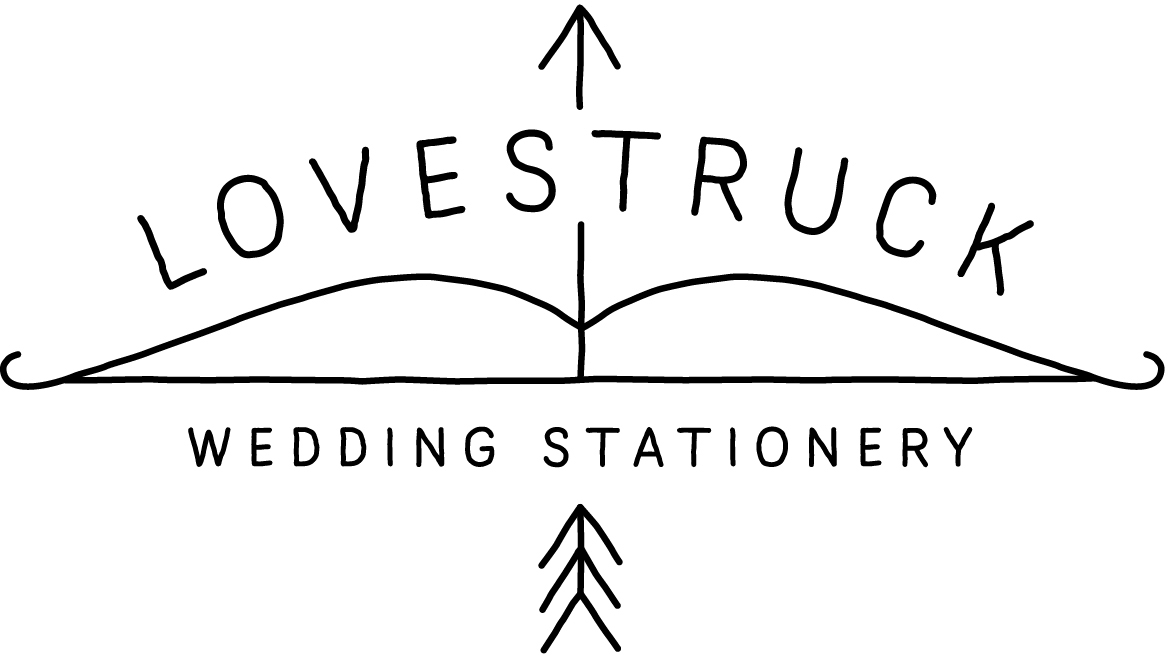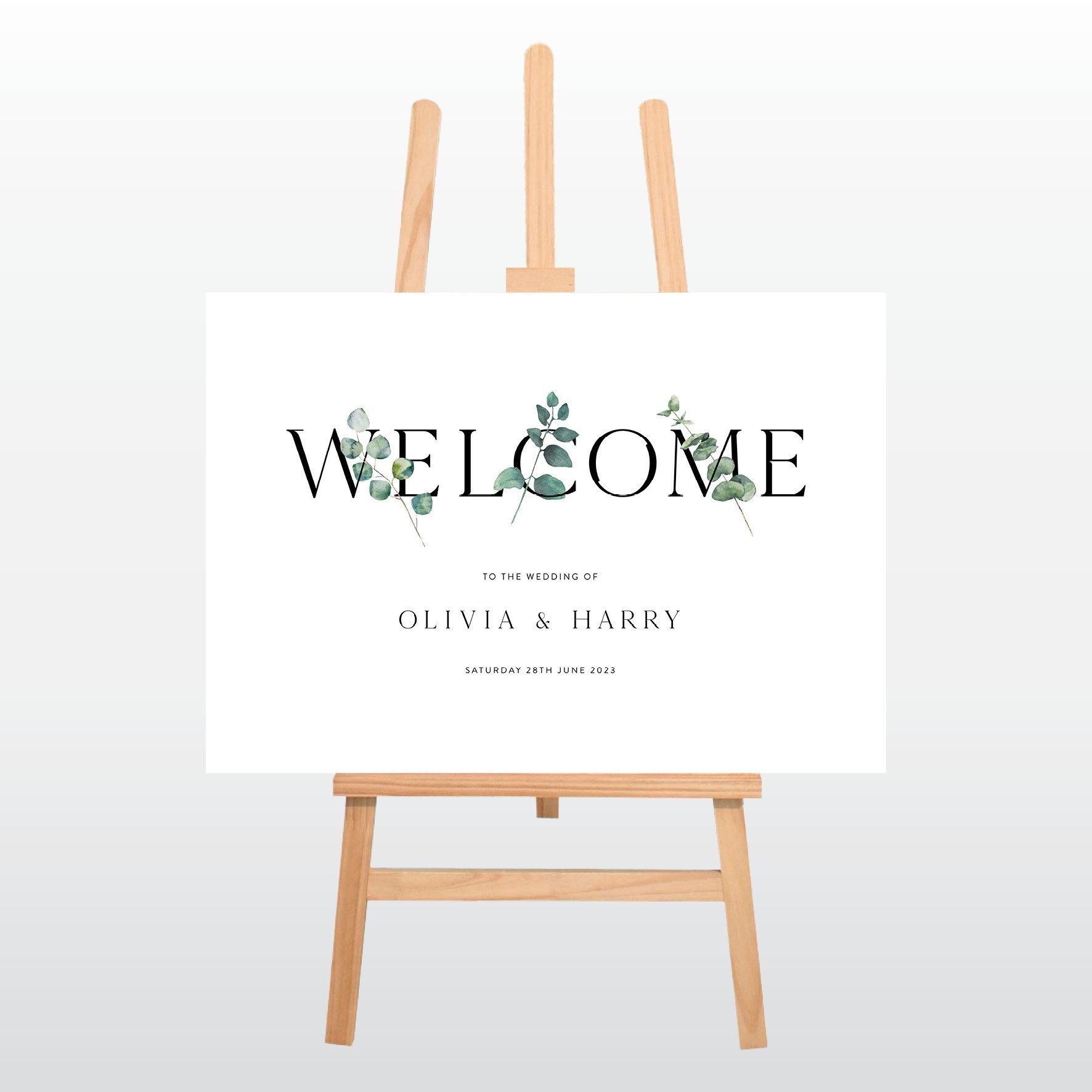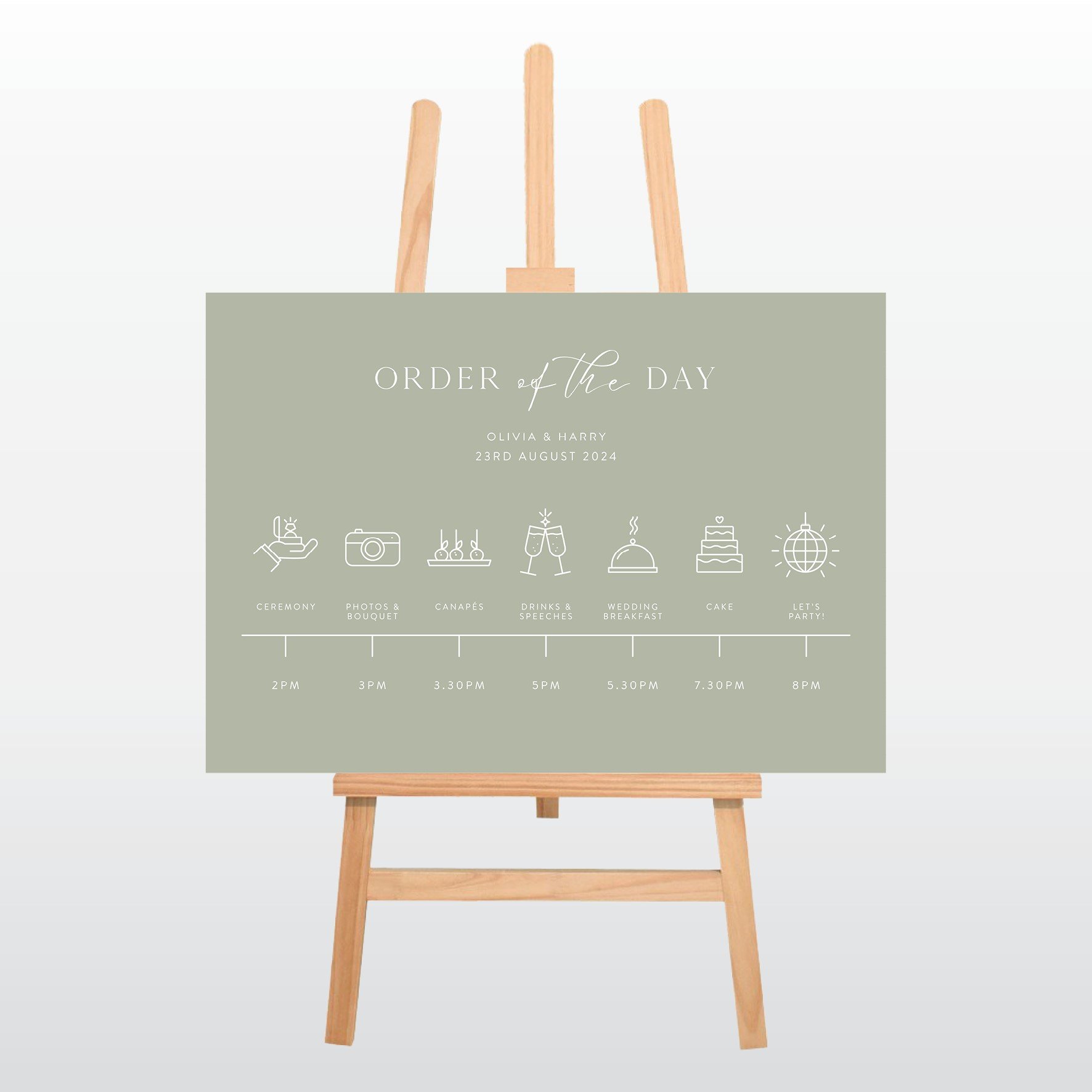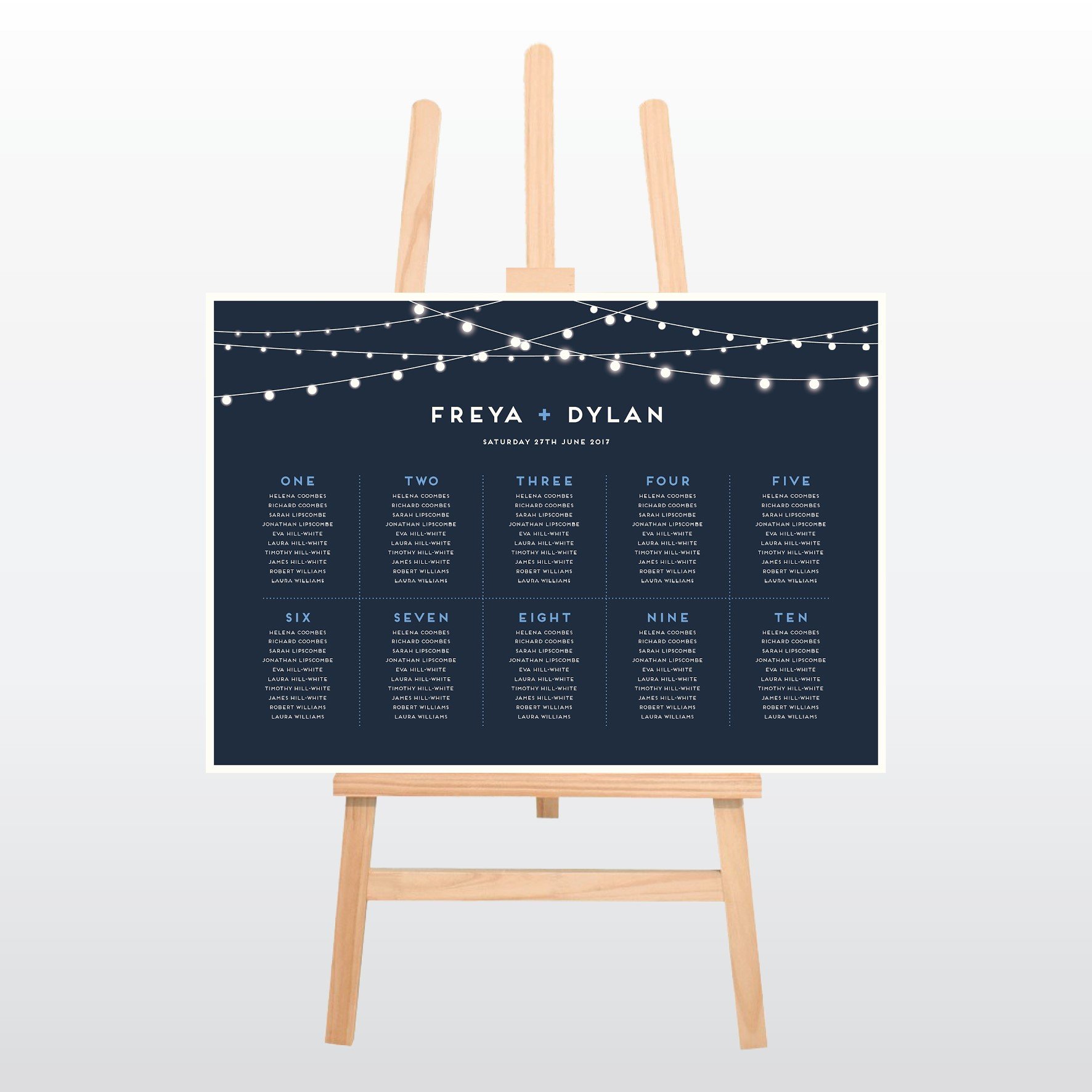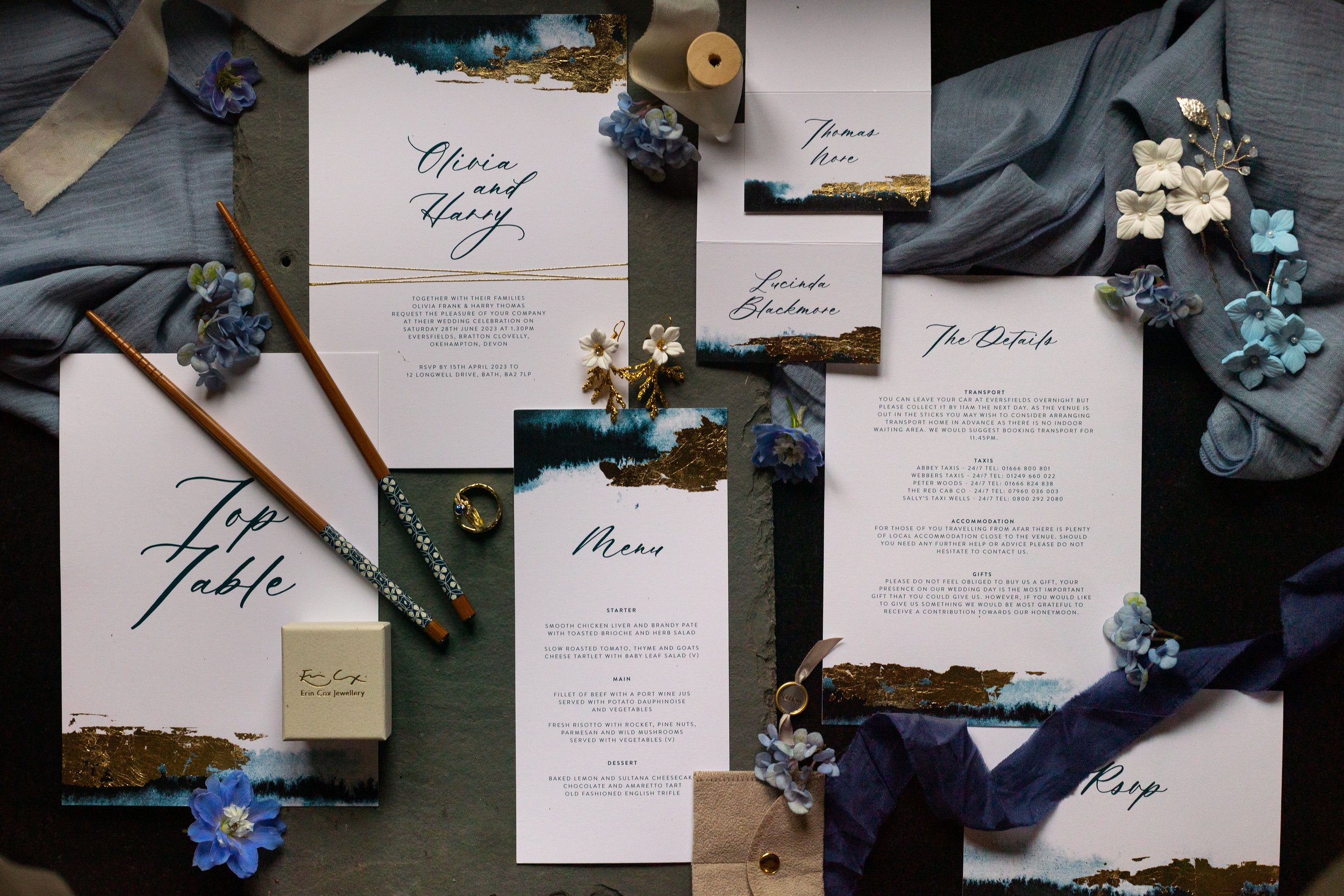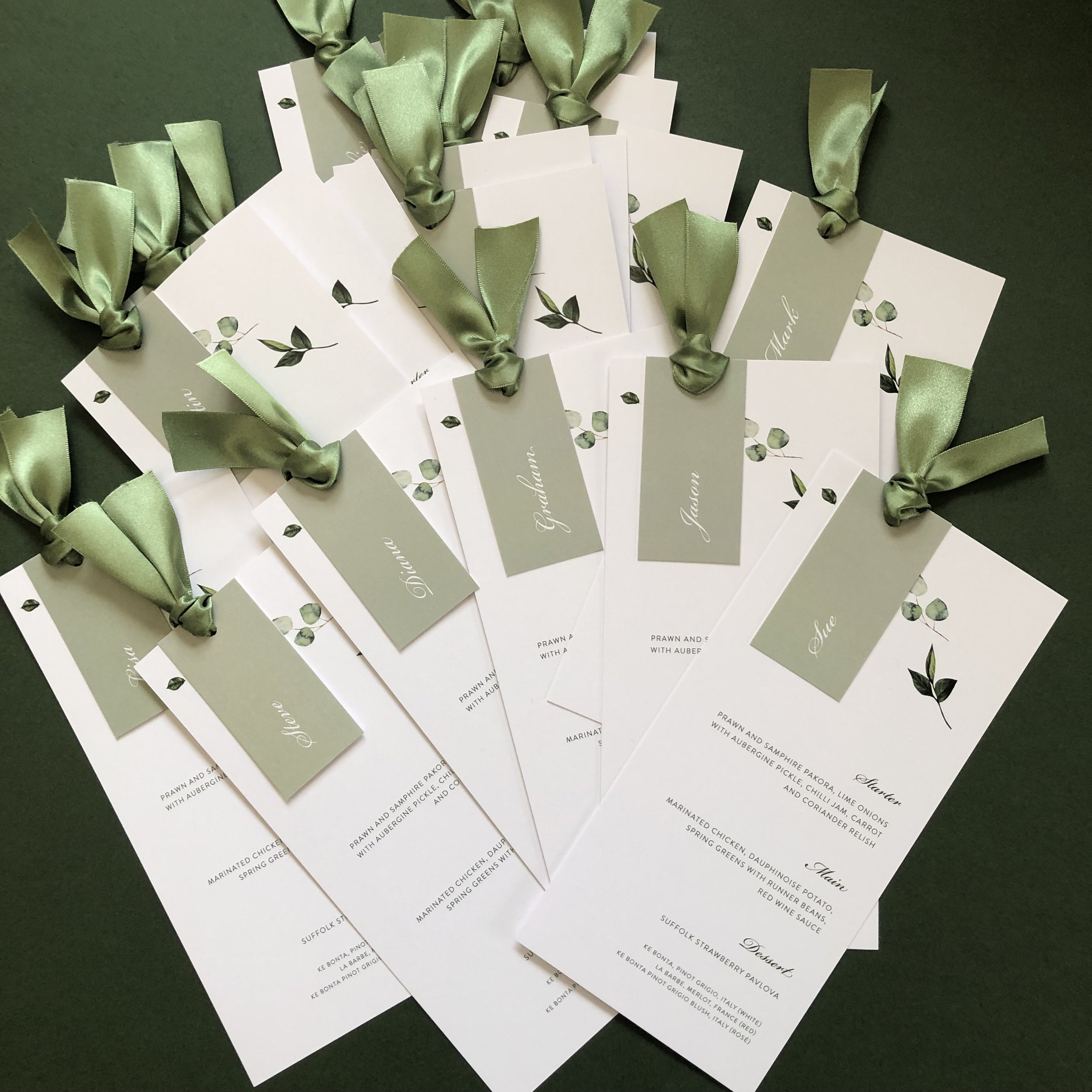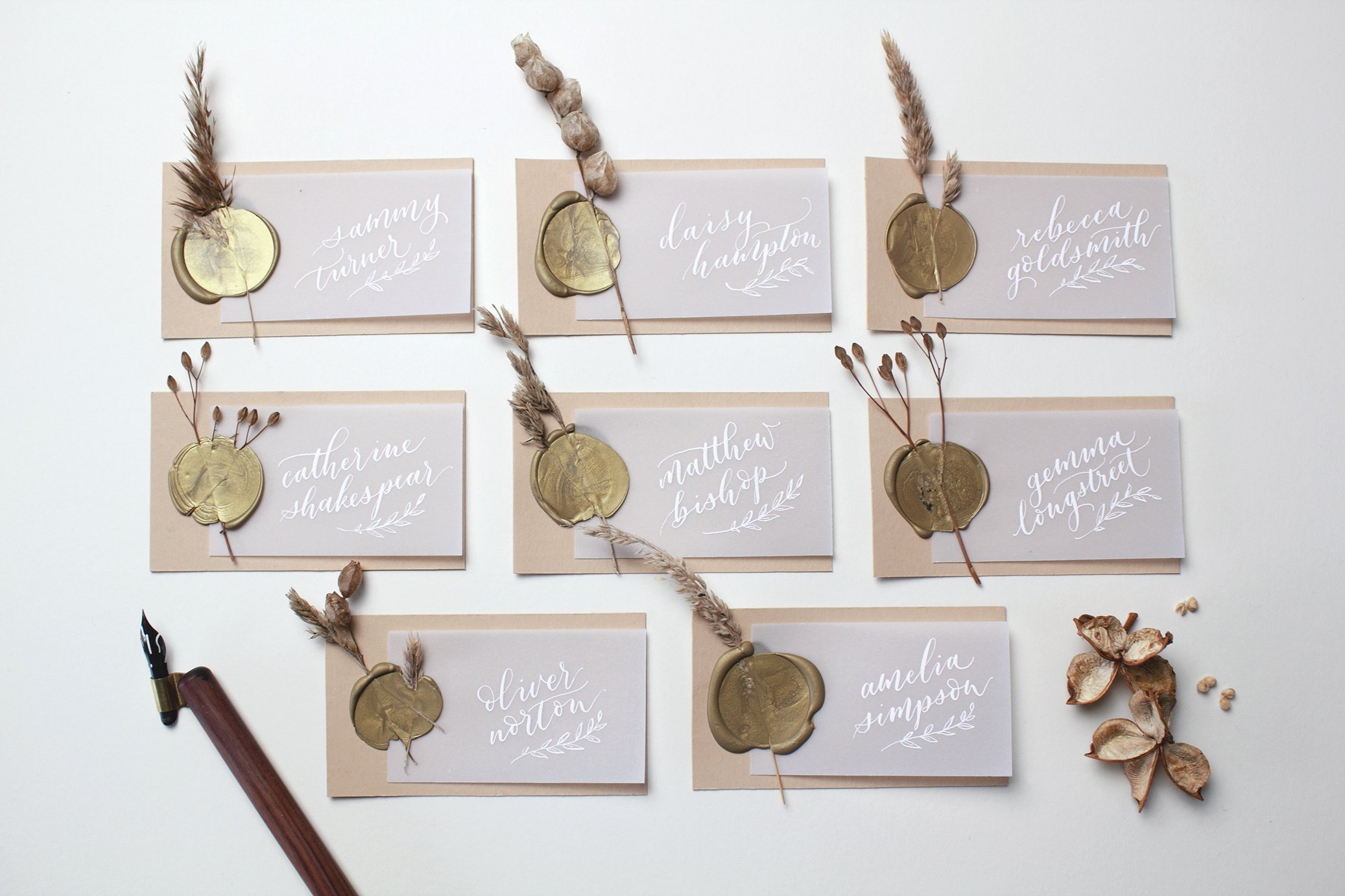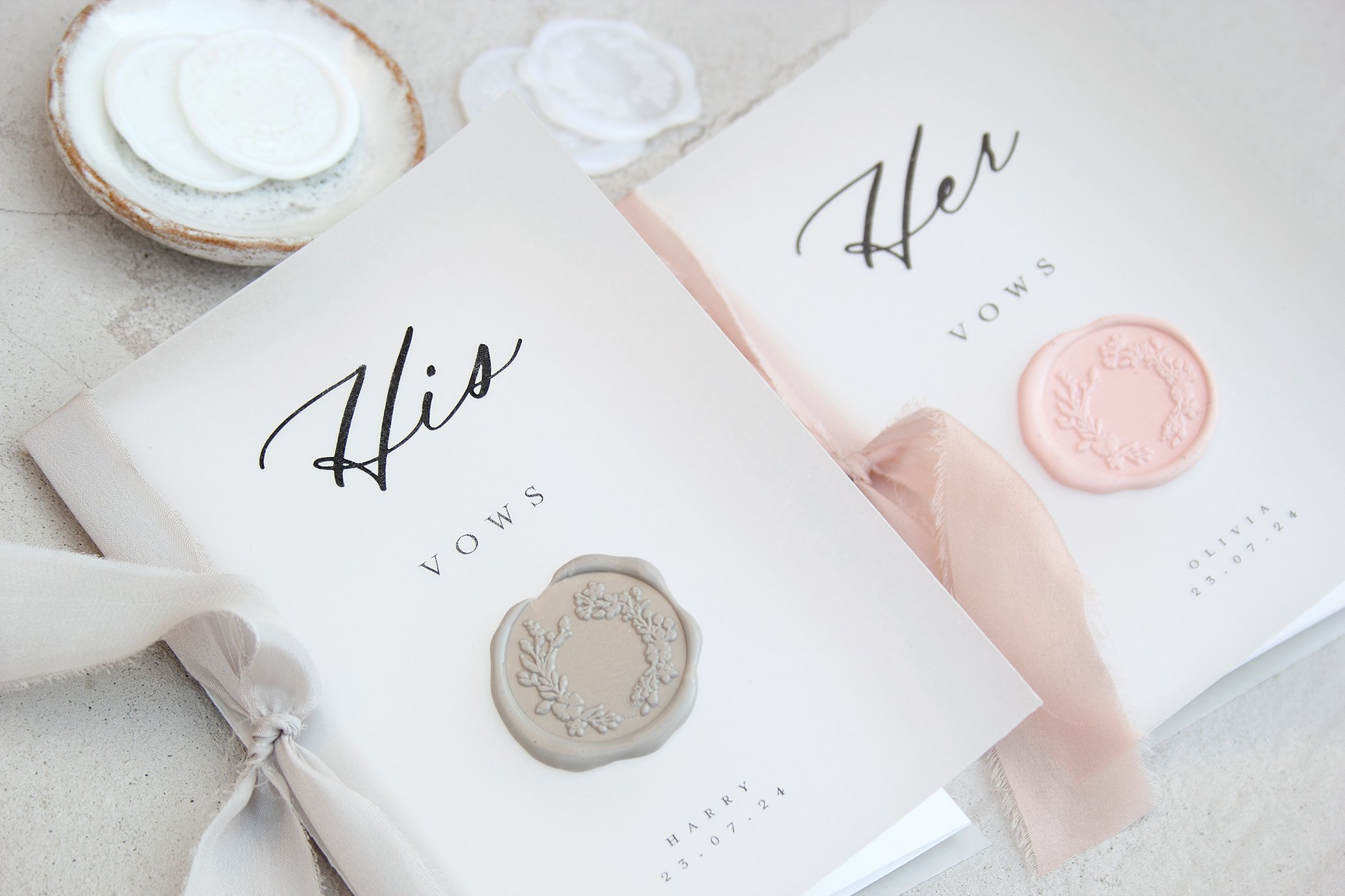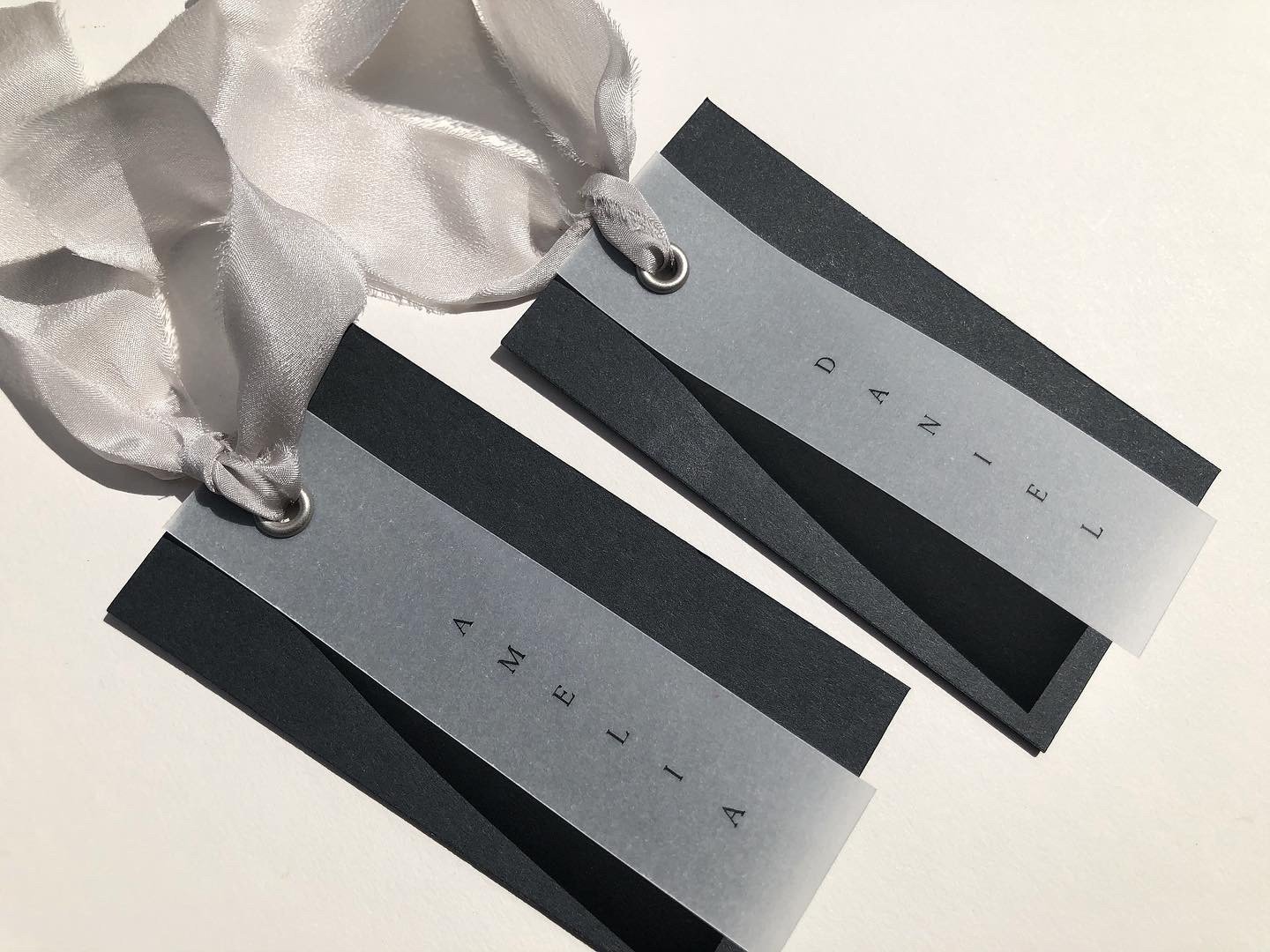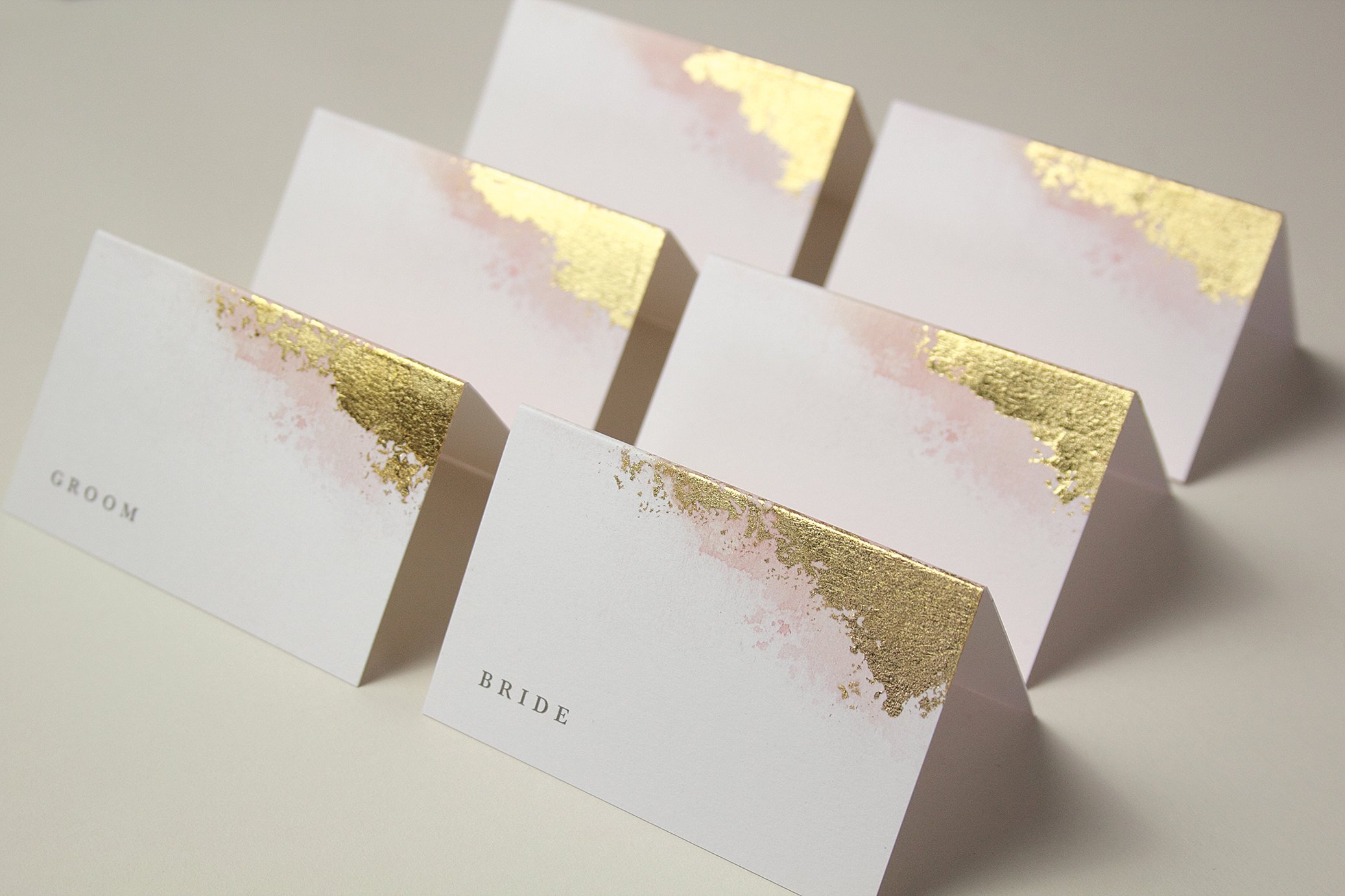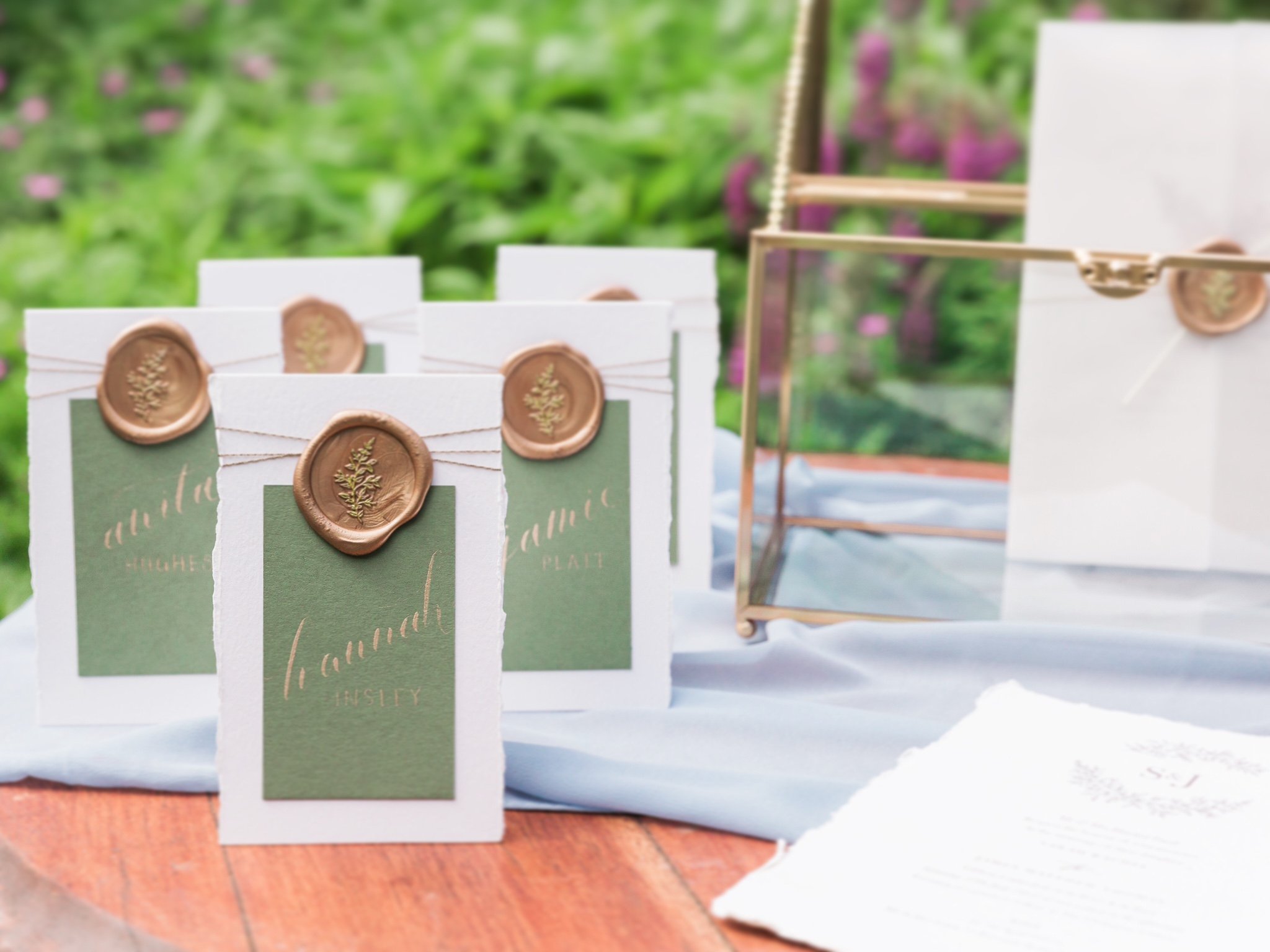Informative but not to mention decorative and beautiful, wedding signs are a must to keep guests informed and help them navigate your big day. Here are a few ideas for signs you may want to include at your wedding:
1. Welcome Signs: Usually placed at the entrance of the venue, a welcome sign will greet your guests and let them know they are in the right place. They display a welcome message, the names of the couple getting married and the date of the wedding. They can also be combined with the 'order of the day’, essentially creating one sign instead of two separate signs. These are usually large A1 signs printed on rigid 3mm foamex board to stand up on an easel.
2. Order of the Day Signs: An 'order of the day' or 'order of events' sign is simply a schedule of the days events and activities to ensure your wedding guests don't miss out on any important moments. This can be a list of times and events or displayed with illustrations in a timeline style. Typically it will start with the ceremony time and follow with photographs, speeches, canapés, cutting the cake, first dance, evening buffet, carriages etc. These are usually large A1 signs printed on rigid 3mm foamex board to stand up on an easel.
3. Unplugged Ceremony Signs: This is a polite message displayed at the entrance or inside the venue asking your guests to refrain from using electronic devices during the ceremony. The purpose is to create a more focused, intimate atmosphere without the distraction of smart phones, cameras and tablets. These can be large A1 signs printed on rigid 3mm foamex board or smaller A2/A3/A4/A5 signs.
4. Wedding Breakfast / Menu Signs: A sign displaying the wedding menu or sit down meal details. The term 'wedding breakfast' is a historical term that simply refers to the first meal the newlyweds and guests have after the ceremony. These can be large A1 signs printed on rigid 3mm foamex board or smaller A2/A3/A4/A5 signs.
5. Table Plans / Seating Charts: Probably our most popular and requested sign, a wedding table plan (also know as a seating chart) is a visual layout showing the table arrangement with guests seating assignments, usually displayed at the entrance or inside the venue / reception. Simply put, a table name or number with the list of guests sitting at each including the couples names and date of the wedding (usually at the top). Names can also be displayed in alphabetical order with the guest name and the table they are allocated to. These are usually large A0 or A1 signs printed on rigid 3mm foamex board to stand up on an easel. Table plans can also be individual cards pegged or attached to a display.
Table Plans — Lovestruck Stationery
7. Bar / Drinks / Cocktail Signs: These can show what drinks are available at the bar and can also inform your guests of an open bar or free drink allocation. It can also show the newlyweds cocktail choice and the ingredients.
8. Donation / Charity Signs: Often included when the couple would like guests to donate to a chosen charity and can include a QR code to link to a specific website.
9. Directional Signs: Useful to point in the direction of the wedding itself (i.e. road signs) and also areas within the venue, such as glamping, toilets, the bar, etc.
10. Toilet Signs: These can be directional and point in the direction of the bathroom or are used in the ladies / gents with a special message such as 'Freshen Up' placed next to a basket of toiletries.
11. Cake Signs: A sign (or several) placed next to the wedding cake showing the flavours of the wedding cake. These often include allergen information and ingredients.
12. Gifts & Cards Signs: Usually placed by a box encouraging guests to post messages and gifs inside.
13. Guest Book Sign: Usually an A4/A5 size sign that is displayed next to your guest book encouraging people to leave a message of congrats. They can be printed on card (ideal if you are displaying in a photo frame) or on thicker board with a strut added to the back so they are freestanding.
14. Social Media Signs: These can be used to encourage guests to take photos of the celebrations and often display a personalised hashtag for posting on social media.
15. In Loving Memory / Until We Meet Again Signs: A sign to remember lost loved ones.
16. Let Love Sparkle Signs: Placed next to a basket of sparklers which are lit by guests to celebrate the newlyweds.
Signs can be A0 / A1 / A2 / A3 / A4 or A5 and printed on rigid 3mm foamex board or smaller signs on 350gsm card.
These are just a few of the sign options you can include at your wedding, so if you have your own ideas and would like to discuss your wedding signs, please get in touch: [email protected]
